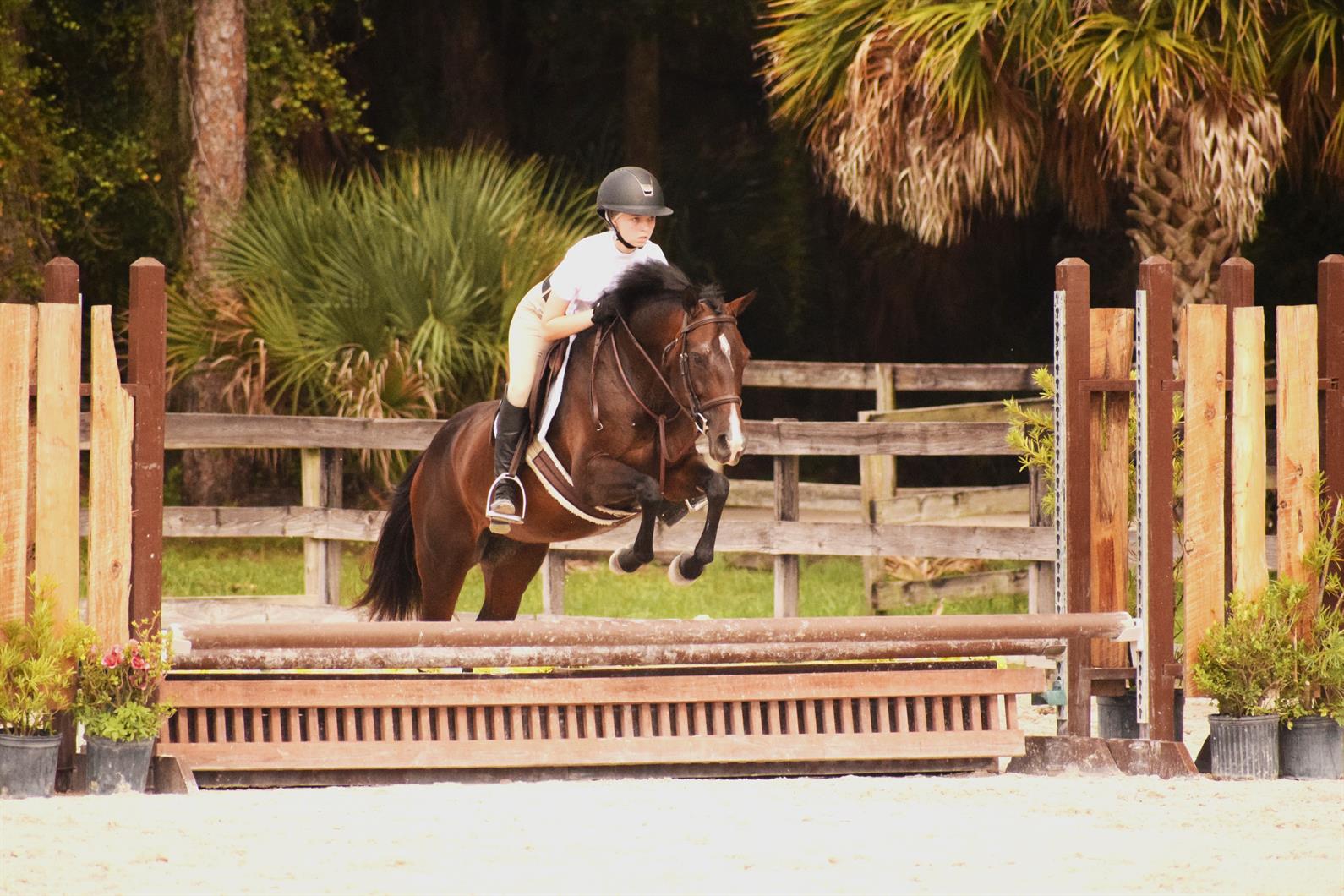
Photo: Anneliese Murch
Hunter jumper trainer Kirsty Wright isn’t sure what possessed her to drive from her base in Odessa, Fla., to Jacksonville, Fla., in April 2018 and bring home an unbroken 13.2-hand mare that took more than an hour to catch in her pasture. The eight-year-old pony had an unusual history. The Jacksonville sheriff’s department had picked her up after receiving reports that she was wandering alone in woods near the city, and, after no one claimed her, they eventually sent her on to a local horse owner, who posted the Facebook ad and video that caught Wright’s attention.
“I’m always looking for projects on Facebook,” Wright said. “Last year I found this pony on a video. It said she was green-broke, and it was just a video of her trotting in a very deep round pen. I just kind of liked the way she moved. She was up in Jacksonville, so I messaged the lady. She told me that she’d been found wandering in the woods and they had no idea what had happened to her, that she was stall-aggressive, and that when you went to catch her in the pasture she’d pin her ears at you. Based on that, I’m not sure why I decided to go up and see her, but I did!”
This mare became more of a project than Wright bargained for. But the process of breaking and training her also stretched Wright as a trainer, inspiring her to find creative approaches and to see things from a new perspective. Today, this remarkable little mare, nicknamed Noelle and registered as Bobbidi Boo, is collecting blue ribbons in the hunter ring.
We asked Wright about Noelle’s transformation from feral pony to show-ring veteran, and what both pony and trainer learned from each other along the way.
How wild was Noelle when you first got her? Was she totally untrained?
“She hopped right up into my little step-up trailer, and she could be led, so I think at some point in time someone had at least halter-trained her, but that seemed to be about the extent of what she could do.
She walked through the barn like she was walking on glass. She just tiptoed through like she thought something was going to eat her, so I don’t think she’d ever been in a show barn before.
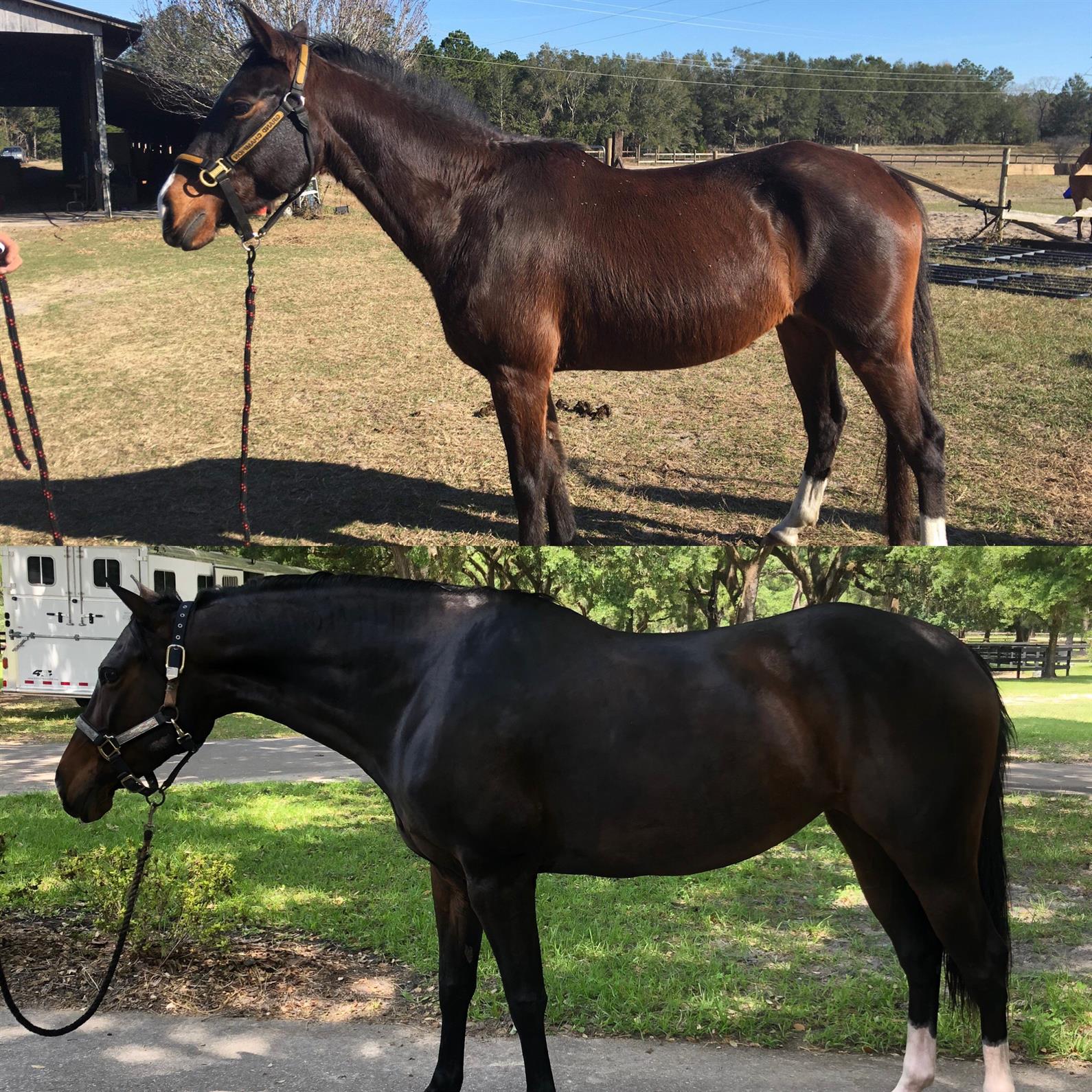
Photo: Courtesy of Kirsty Wright
“We threw her out in a pasture, and I watched her trot out and thought, ‘She moves kind of cute.’ That was her saving grace at that point! Her tail was probably about three inches above her hocks, so she had practically no tail, and she had no muscle. Her head looked too big for her body because she had no neck. She looked almost Quarter Horse-y, but now I wonder if there’s some Welsh or Arab in there; there’s something athletic and fairly level-headed in there. She wasn’t underfed or anything like that; she looked like a horse that had been living out in a pasture.
“The next day, I couldn’t get anywhere near her. Not with food, not with treats. I’d get within a foot of her, and she’d run away. It took me two-and-a-half hours to catch her. I thought, ‘Uh-oh! What did I get myself into?’
“When I got her in the barn, she didn’t know how to cross-tie, she didn’t know how to get brushed off, I couldn’t get the hose or the fly spray anywhere near her. I remember I texted my boyfriend and said, ‘This might be more long-term than we were thinking!’”
How were you able to gain her trust?
“With time and patience, she eventually learned that if she came when I went to catch her, she’d get food, and she’s very food-motivated, so that helped. When she was on the cross-ties, the first week I would just stand with the hose near her but not touch her with it or spray the fly-spray bottle near her but not touch her with it. Once she learned that something wasn’t going to hurt her, she was fine. She was smart like that.
“I had to get creative, and it took a lot of Googling and thinking, ‘Hmm, maybe there’s a different way I can go about this?’ She certainly wasn’t like a pony that had been bred well and handled her whole life and then you start breaking them at four. This was a whole different story.
“I would just stand with her in her stall. I was spending hours with her, way longer with her than I ever had intended to spend, just trying to get her to the point where a normal four-year-old would be when you’re thinking about breaking them.
“I eventually started with the longe line. By then, she knew that she liked me and that I was a safe person who fed her, so the challenge was getting her to move away from me on the longe line. She’d just stay by me.
“For a long time, I couldn’t get the bridle on her, because I couldn’t get my finger in the side of her mouth without her going up in the air, and I started to think I wasn’t ever going to be able to ride this thing. If she thought she couldn’t handle something, she went straight up. I think it was just pure panic.
“I’d stand with her with my hand on top of her head, and if she felt like she was going to go up, I’d just tap her on top of her head—not hard—and that seemed to help with that problem. That’s now gone away completely.
“I’d stand with her in the ring while lessons were going on and just let her listen to the commotion. I’d walk her over the poles and tiny cross-rails, and every once in a while I’d try to get my finger into the side of her mouth. It was very, very slow going.
“Then one day I thought, ‘I’m just going to try to put a bridle on her,’ and I got it on. Eventually, progress just started happening.”
You were able to get on her in July, several months after you got her. How did that go?
“I leaned over her a lot until I got brave enough to sit on her, and she was really good—she never cared about it whatsoever! I’d swing my legs around a little bit and hop off, and eventually I put my feet in the stirrups. When I asked her to walk forward, she walked backwards about five steps, so for a while she only had reverse gear!
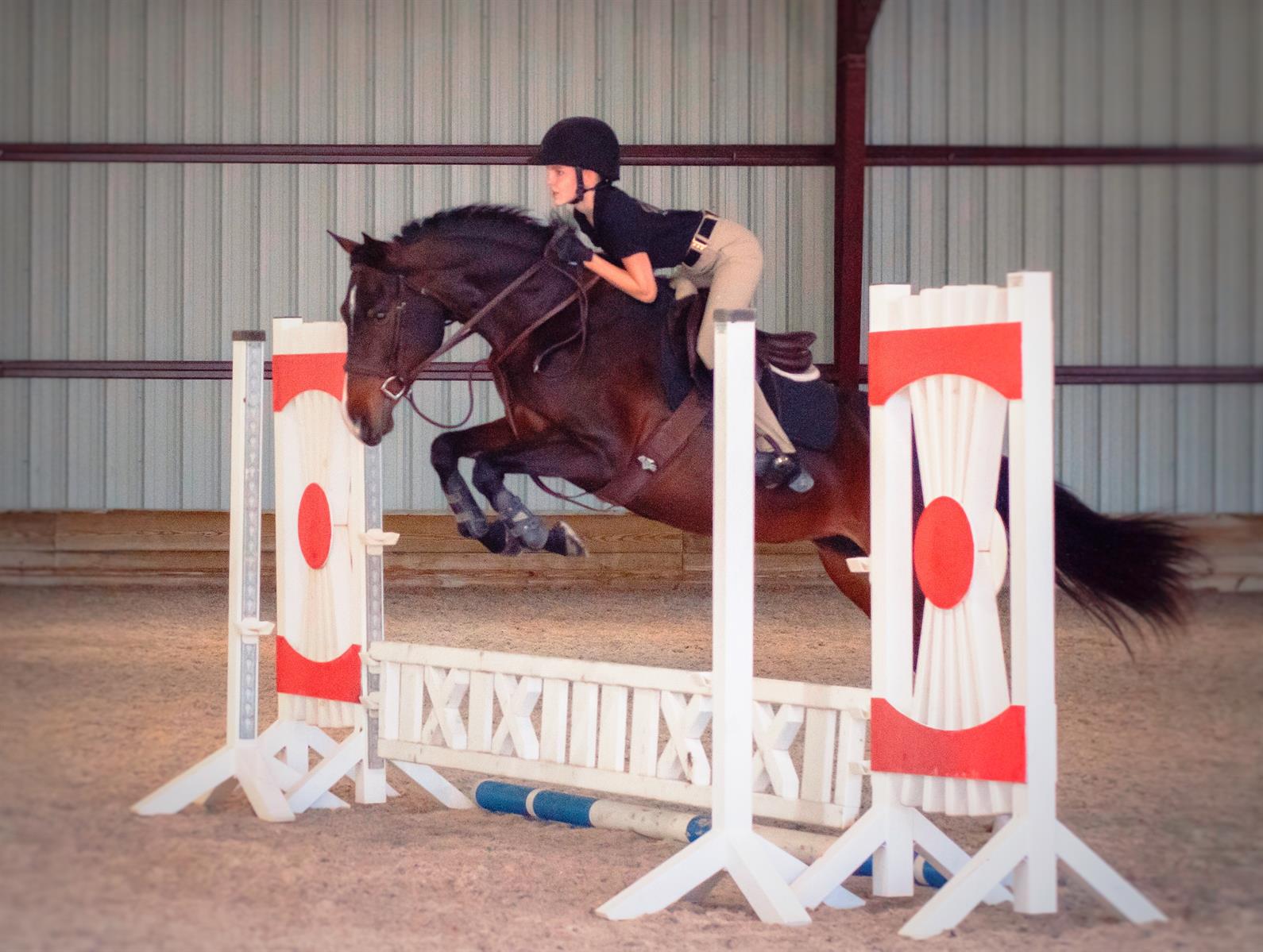
Photo: Chellie Loo
“Another trainer said to me, ‘She doesn’t know what a crop is, so why don’t you get a dressage stick and tickle her sides when you get on and see if that will help her figure out that forward is the way to go?’ So I did that, and when she’d move away from it, I’d pat her a lot. For a while it was just about getting on and letting her walk for a few steps around the ring, then getting off and calling that a good day. Once she figured out what forward was, she really kind of clicked into what she was supposed to be doing.
“She was super-quiet, and she was always very willing. I think that was certainly a trust thing. And that was another thing I learned: I think now she would have jumped over fire for me. Maybe not for anyone else, but she was almost like a rescue dog.
“The next big hurdle was putting somebody other than me on her. My niece, Nona Skrzypczak, rides. She was 12 then, and she’s pretty good about being patient with young ones, so I put her up. I swear the pony eyeballed me the whole way around the ring, like she was saying, ‘Why are you over there instead of up here?’ I could see her eye following me around. But she never put a foot wrong.”
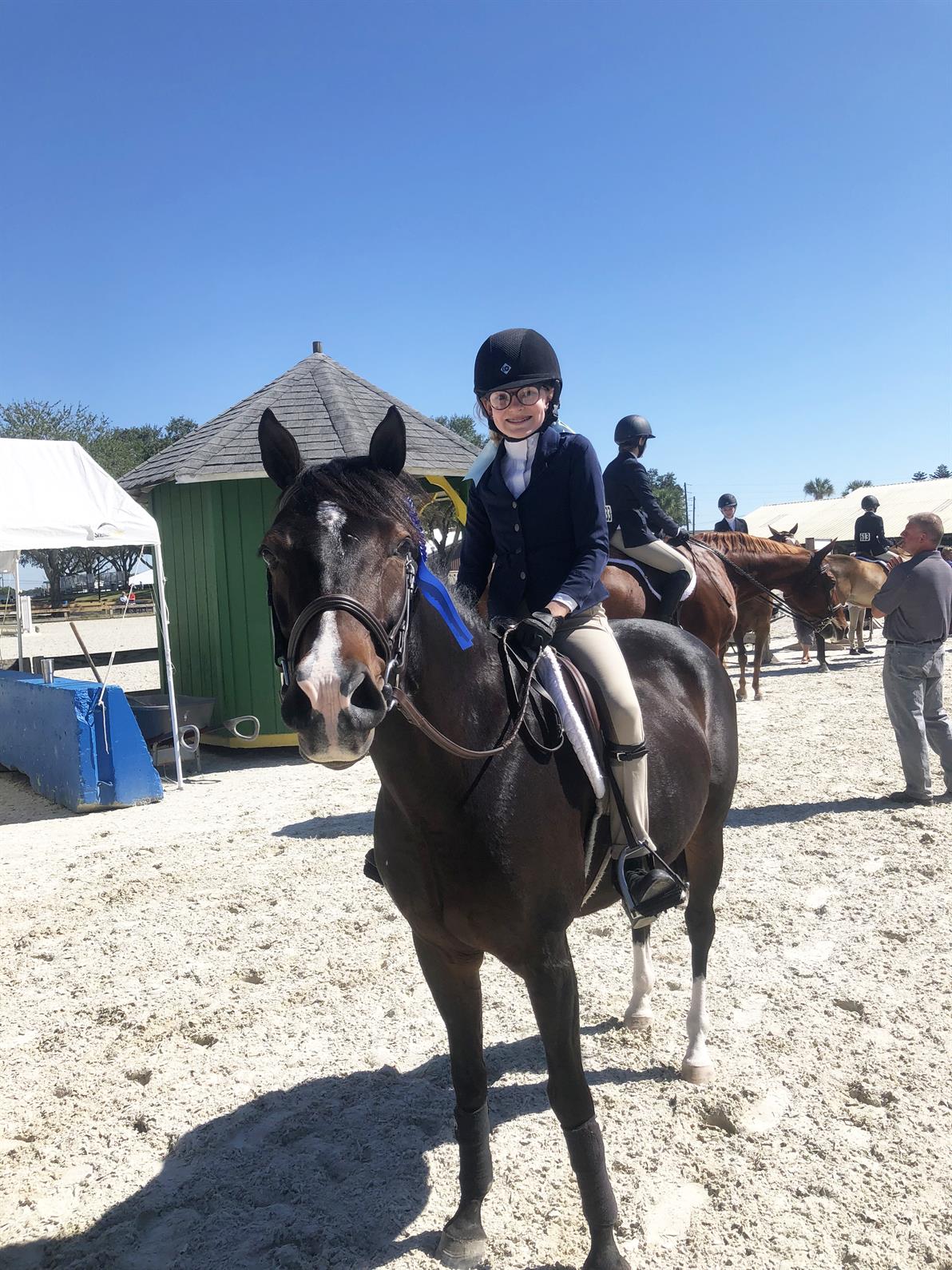
Photo: Courtesy of Kirsty Wright
So when Nona took Noelle to her first local show last winter in a flat class, how did the mare handle it?
“We had no idea how she’d react to it, and she went out there and won the class! Her first local show over fences in February didn’t go very well. When she went in the ring all by herself to show, she kind of froze up. It wasn’t that she was refusing the jumps. She was refusing to move. It was like stage fright. But then she goes back in for the flat class and wins. So she was fine in the ring with other horses, she just didn’t want to be in there alone. The next morning, I got up and rode her around in the ring by herself, and once she did that with me, she went back in with my niece for the show and went right around.
“Today we’re at the point where she’ll jump around the children’s pony course, and there’s only one flat class she hasn’t won. She’ll do the whole fall series here in the children’s and then we’ll break her green status in December and qualify her. She’s jumping around in the ring with kids and switching leads! I get so nervous sending her in the ring now, because it’s like my little baby in there. It really is a different perspective.
“I guess the ‘wow’ moment was the first time I jumped her over an oxer, which was at HITS. I felt her jump over that and thought, ‘Huh! There’s quite a bit of scope in there!’ She never feels like she’s struggling to get over a jump, even with me on her. I’m not a huge person—I do ponies and I’m 5’2”—but I’m bigger than a kid.
“She’s never going to scope out, and that was surprising. I mean, 2’6” is a walk in the park for her. It took me about three days to teach her a lead change. The first day she had no clue, the second day we tried over a pole, and the third day she had perfect lead changes. The athletic ability was a very nice surprise. You never know until you’re putting the jumps up and seeing where the scope is.”
What do you think you’ve learned from the experience of breaking and training Noelle?
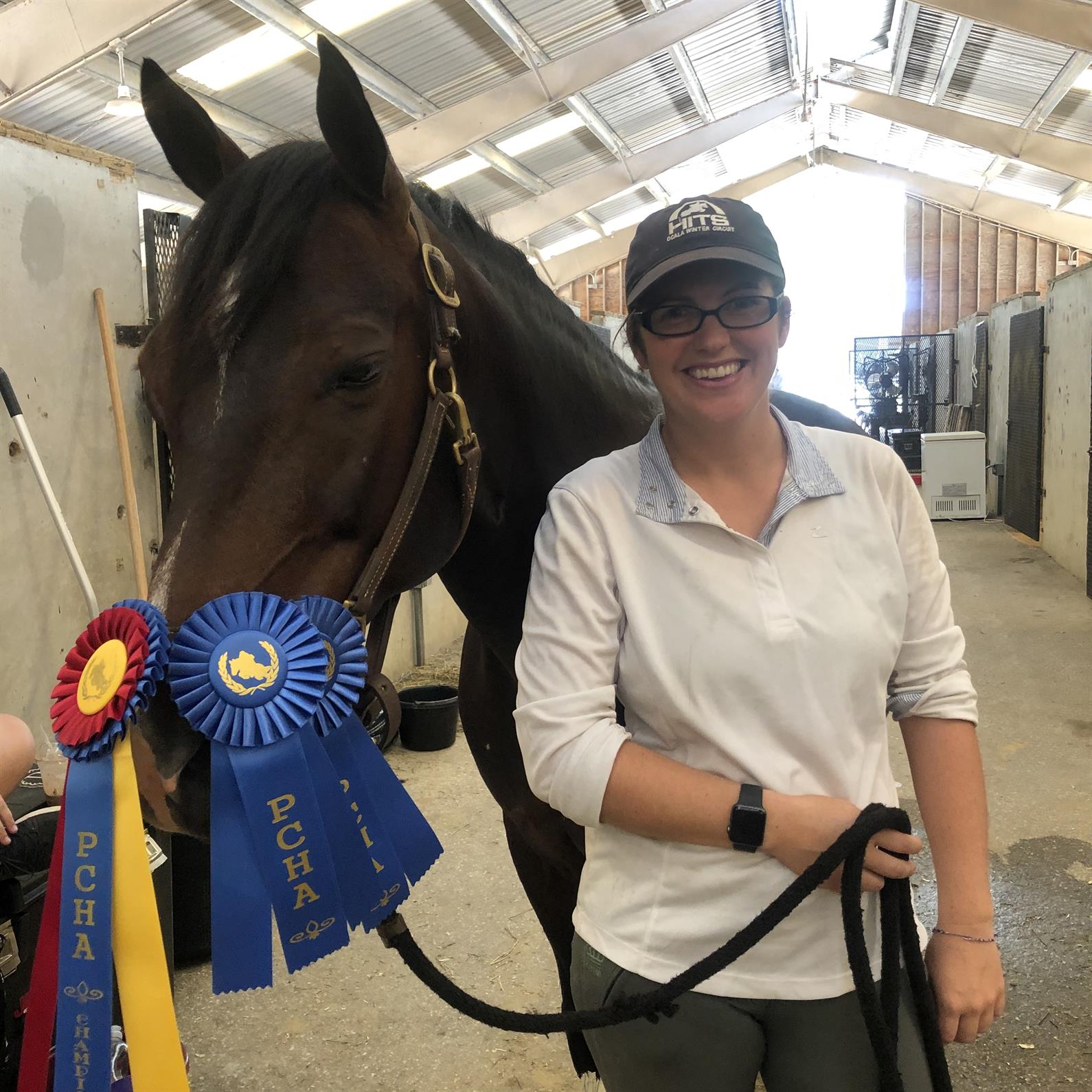
Photo: Courtesy of Kirsty Wright
“It really taught me to be patient, and it taught me something else, too. You get horses in that are already broke and have issues, and you’ll think, ‘Well, you know, he’s 12, that’s just how he is.’ But now I feel like if you can get one that’s wild at eight years old and break it to be jumping around with kids on it, then we probably shouldn’t be giving up on the ones who have a sticky lead change at 12, you know?
“As much as anything, it gave me confidence. I thought, ‘If I can handle that, maybe I can handle more things than I thought I could before.’ It has kind of changed me.
“Something in my gut when I saw her told me that this was the right one, and I’m really glad that I got her, because I’m not sure that most people would have stuck with her in the beginning, considering that you couldn’t even catch her! Everything was more work than I was planning on, but I certainly was paying my tuition, because I learned a whole lot from her and I’ve gotten a lot of confidence from it.”
Want more articles like this delivered to your inbox every week? Sign up here to receive our free Equestrian Weekly newsletter.
This article is original content produced by US Equestrian and may only be shared via social media. It is not to be repurposed or used on any other website aside from usequestrian.org.

